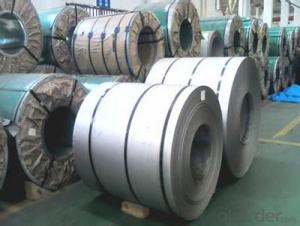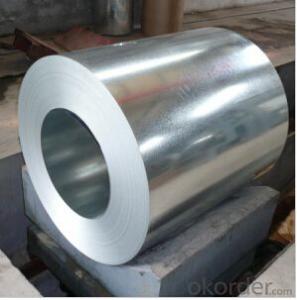Galvanized Steel Coils/Plate SGCC Gi Gx51d
- Loading Port:
- Tianjin
- Payment Terms:
- TT OR LC
- Min Order Qty:
- 50 m.t.
- Supply Capability:
- 10000 m.t./month
OKorder Service Pledge
OKorder Financial Service
You Might Also Like
Item specifice
Product Details
Basic Info.
Type:Steel Plate
Standard:ASTM, AISI, GB, JIS, DIN, BS
Certification:ISO, SGS, BV, RoHS, IBR
Surface Treatment:Galvalume
Technique:Hot Rolled & Cold Rolled
Application:Ship Plate, Boiler Plate, Container Plate, Flange Plate
Special Use:Carbon Steel
Stock:Not Stock
Thick:0.12-4.0mm
Width:600-1250mm
Zinc Coating:Az50-Az150G/M2
Material:Dx51d,Dx52D,G350-G550
Surface:Anti-Fingerprint,Minimumed Spangle ,Bright , Oiled
Export Markets:Global
Additional Info.
Trademark:Sino Steel
Packing:Properly Packed for Ocean Freight Exportation
Standard:SGS, ISO9001
Origin:Shandong
HS Code:721061000
Production Capacity:350000 Tons/Year.
Product Description
Hot Dipped 55% Aluminum Zinc Alloy Coated Steel by the Hot-Dip Process
Hot Dip Galvalume steel coil EN 10327 JIS G3321, ASTM A792M 55% AL-ZN coated
Specification:
| Commodity | AZ150 AFP G550 Galvalume steel coil with SGS certification |
| Technical Standard: | JIS,GB,DIN,BS,ASTM |
| Grade | DX51D / DX52D/ DX53D/G300/G550 |
| Types: | Commercial / Drawing / Deep Drawing / Structural quality |
| Width | 500/650/726/820/914/1000/1200/1219/1220/1250mm |
| Thickness | 0.12-4mm |
| Type of coating: | aluminum-zinc alloy |
| Zinc coating | AZ50-AZ150 55% Al, 43.5%Zn, 1.5%Si. |
| Surface treatment | Pre-painted/ skin pass/ oiled/slightly oiled/unoiled/ dry/ anti-fingerprint/Non anti-fingerprint |
| Surface structure: | minimized spangle / regular spangle |
| ID coil | 508mm or 610mm |
| Coil weight | 3-8 MT per coil/ sheet will be cut as clients's requirments |
| Package: | Properly packed for ocean freight exportation in 20''containers |
| Application: | Industrial panels, roofing and siding for painting |
| Price terms | FOB,CFR,CIF,CNF,DAP,etc |
| Payment terms | 30%TT deposit in advance +70% TT balance against copy of B/L or irrevocable 70% L/C at sight |
| delivery time | Within 25 work days after deposit received. |
| Remarks | Insurance is all risks |
| MTC will be handed on with shipping documents | |
| Third party inspection such as SGS supported |
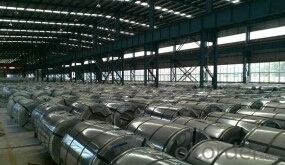
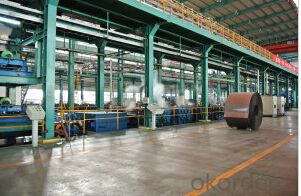
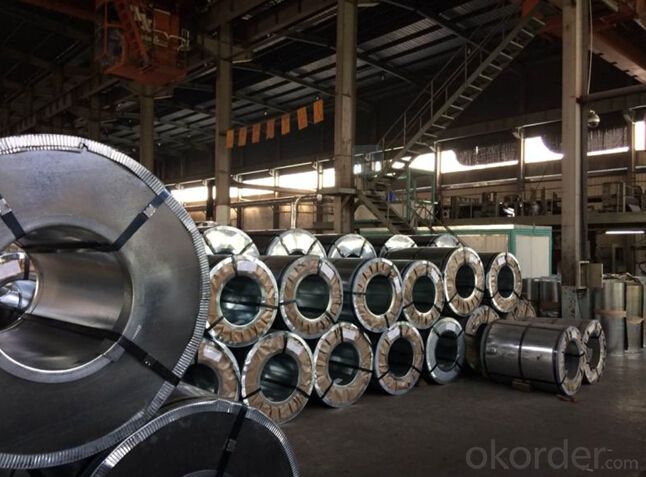
FAQ
1.What's your MOQ?
25MT, it is for one container.
2.Do you have QC teams?
Yeah, sure, our QC team is very important, they will keep the quality control for our products.
3. What's your normal delivery time?
Our delivery time about 10-20days for standard sizes, if you have other requirements like hardness and width ,it is about 20-40days. But don't worry ,we also try our best for the delivery time ,because time longer and our cost is higher.
4.Are the products tested before shipping?
Yes, all of our PPGI and GI was qualified before shipping. We test every batch every day.
- Q:Can steel coils be coated with thermally conductive materials?
- Yes, steel coils can be coated with thermally conductive materials. These materials are designed to enhance the heat transfer capabilities of the steel coils, allowing for efficient dissipation of heat in various applications such as electronics, automotive, and industrial processes.
- Q:What are the common thickness tolerances for steel coils?
- The common thickness tolerances for steel coils usually range from +/- 0.001 to +/- 0.005 inches, depending on the specific industry standards and customer requirements.
- Q:Where can you buy a steel polearm in a shop or if someone has a file in Scania than can you sell me one ill buy it for 150k my account is tonypark500
- Steel polearm was from the Aran Welcome Event, which ended a few weeks ago. Now is the worst time to buy one, since the craze just ended and steel polearms are now heavily in demand (sadly). Your best bet is the free market, but they will cost you a few mil.
- Q:What are the different types of coil recoiling machines?
- The different types of coil recoiling machines include manual coil recoilers, semi-automatic coil recoilers, and fully automatic coil recoilers.
- Q:How are steel coils processed and shaped into different products?
- Different products are manufactured from steel coils through a series of manufacturing processes. The initial step is referred to as uncoiling, which entails the unwinding and straightening of the steel coil. Typically, this is achieved by feeding the coil through a machine called a decoiler. Once the coil is uncoiled, it proceeds to the leveling process. The objective of this step is to eliminate any unevenness or warping in the steel. The coil is passed through a set of rollers that exert pressure and flatten the steel to achieve the desired thickness. This ensures that the steel is uniform and prepared for further processing. Following the leveling process, the steel is usually cut into smaller pieces or sheets. Machines such as shears or slitters are employed for this purpose, enabling the steel to be cut into various widths or lengths. The specific dimensions depend on the requirements of the particular product being manufactured. After the steel is cut, it can undergo additional shaping processes. One commonly used method is roll forming, in which the steel is gradually shaped into the desired profile by passing it through a series of rollers. This technique is frequently utilized in the production of roofing sheets, wall panels, or beams. Another widely used shaping process is stamping. In stamping, the steel is pressed between a die and a punch to create intricate shapes or patterns. This method is commonly employed in the automotive industry for the production of components such as car body panels or engine parts. In addition to shaping, the steel may also undergo surface treatments or coatings to enhance its properties or improve its appearance. This can involve processes like galvanizing, where a layer of zinc is applied to safeguard the steel against corrosion, or painting to provide a decorative finish. In conclusion, the process of shaping steel coils into different products encompasses a combination of cutting, shaping, and surface treatments. These processes are meticulously executed to ensure that the steel meets the required specifications and is suitable for use in various industries.
- Q:How are steel coils inspected for camber?
- Steel coils are inspected for camber using various methods to ensure their quality and suitability for further processing. One common method is visual inspection, where trained inspectors examine the coils for any visible signs of camber. They look for any deviation from a perfectly straight surface, such as a bow or a curve, which indicates the presence of camber. Another method involves using specialized equipment like straightedges, measuring tapes, and laser devices. Inspectors place the straightedge along the length of the coil to check for any gaps or spaces between the coil and the straightedge. If there is a significant deviation, it indicates the presence of camber. Measuring tapes are also used to measure the distance between the coil and the straightedge at multiple points along the length of the coil. This allows inspectors to determine the extent of camber and whether it falls within the acceptable tolerance limits. In some cases, laser devices are used to provide a more accurate measurement of camber. These devices emit a laser beam that is reflected off the coil's surface and is then analyzed to determine the presence and magnitude of camber. Additionally, advanced technologies such as computer vision systems and artificial intelligence algorithms are also being employed in the inspection process. These technologies can analyze images or videos of the steel coils and automatically detect any camber, providing accurate and efficient inspection results. Overall, the inspection of steel coils for camber involves a combination of visual inspection, manual measurements using straightedges and measuring tapes, as well as the implementation of advanced technologies. This multi-faceted approach ensures that camber is effectively detected and controlled, thus maintaining the quality and integrity of the steel coils.
- Q:How are steel coils inspected for paint adhesion using adhesion testers?
- Steel coils are inspected for paint adhesion using adhesion testers in a systematic and rigorous manner. Adhesion testers are devices specifically designed to evaluate the bond strength between the paint and the underlying steel surface. The inspection process begins by selecting representative samples from the steel coils. These samples are usually cut into smaller sections, ensuring that they are free from any defects or surface irregularities that could affect the adhesion test results. Once the samples are prepared, the adhesion testers are employed to measure the force required to detach the paint coating from the steel surface. The most commonly used adhesion tester is the cross-cut adhesion tester. This device consists of a set of blades arranged in a grid pattern. The blades are used to create a series of cuts through the paint coating down to the steel surface, forming a grid of squares or rectangles. After the cuts are made, a specialized tape is applied to the grid area and pressed firmly onto the surface. The tape is then rapidly pulled off at a 90-degree angle to the surface. The force required to remove the paint coating from the steel is measured and recorded. The results of the adhesion test are evaluated based on predetermined standards or specifications. These standards typically define the minimum acceptable adhesion strength for the specific application or industry. If the measured adhesion strength falls below the specified threshold, it indicates poor paint adhesion, which could lead to issues such as paint delamination or corrosion. In addition to the cross-cut adhesion tester, other adhesion testing methods may also be used, such as the pull-off adhesion tester, where a hydraulic or mechanical device applies a tensile force to a small circular or dolly-shaped test area. The force required to pull off the dolly is measured and used to assess the paint adhesion. Overall, the use of adhesion testers ensures that steel coils are thoroughly inspected for paint adhesion. This helps to identify any potential adhesion issues early on, allowing for appropriate remedial measures to be taken to ensure the longevity and performance of the paint coating.
- Q:How are steel coils used in the manufacturing of construction cranes?
- Steel coils are used in the manufacturing of construction cranes to provide structural strength and durability. These coils are typically shaped and welded to form the main framework of the crane, which supports heavy loads and ensures stability during operation. Additionally, the steel coils are used to fabricate various components such as the boom, jib, and counterweights, which contribute to the crane's lifting capacity and overall functionality.
- Q:How are steel coils coated?
- Steel coils are coated using a process called coil coating, where a thin layer of protective material such as paint, plastic, or zinc is applied to the surface of the steel coil. This can be done through various methods including roll coating, spray coating, or electroplating, depending on the desired coating material and application.
- Q:my step father bought a big steel drum grill it has steel sheets (very thin) that go inbetween the flame and the food (closer to the flame) with that there the food will not cook, it does not get hot enough????? please help... what should we do
- yes that keeps the fat from dripping on the burners - just try it - it works.
1. Manufacturer Overview |
|
|---|---|
| Location | |
| Year Established | |
| Annual Output Value | |
| Main Markets | |
| Company Certifications | |
2. Manufacturer Certificates |
|
|---|---|
| a) Certification Name | |
| Range | |
| Reference | |
| Validity Period | |
3. Manufacturer Capability |
|
|---|---|
| a)Trade Capacity | |
| Nearest Port | |
| Export Percentage | |
| No.of Employees in Trade Department | |
| Language Spoken: | |
| b)Factory Information | |
| Factory Size: | |
| No. of Production Lines | |
| Contract Manufacturing | |
| Product Price Range | |
Send your message to us
Galvanized Steel Coils/Plate SGCC Gi Gx51d
- Loading Port:
- Tianjin
- Payment Terms:
- TT OR LC
- Min Order Qty:
- 50 m.t.
- Supply Capability:
- 10000 m.t./month
OKorder Service Pledge
OKorder Financial Service
Similar products
New products
Hot products
Related keywords
